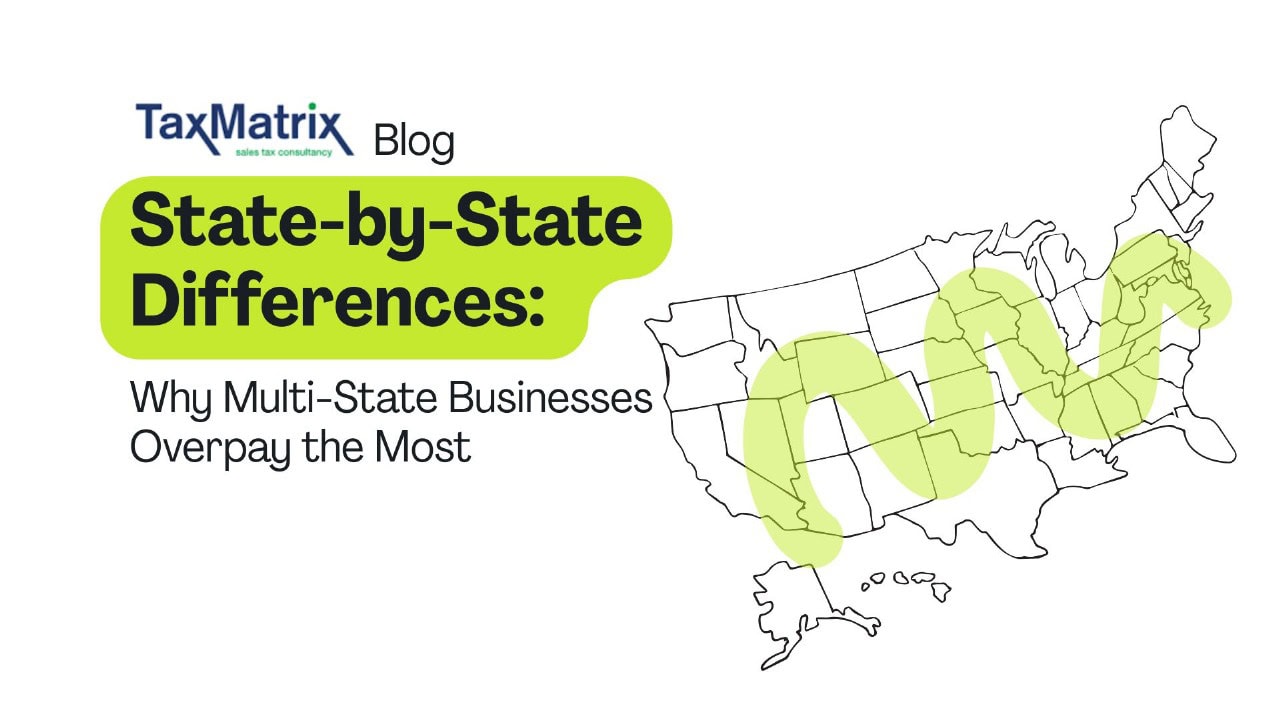State-by-State Differences: Why Multi-State Businesses Overpay the Most
Last Updated on November 7, 2025
If your business operates in more than one state — sells across state lines, owns facilities in multiple regions, or buys equipment shipped to different locations — your risk of sales & use tax overpayment multiplies dramatically.
In our last blog, we explored how capital equipment exemptions lead to six-figure refunds for manufacturers. But when you add multi-state transactions into the equation, the complexity — and the refund potential — increases even more.
Because while the products you buy may be the same, the tax rules are not.
🧭 Why Multi-State Operations = Higher Tax Leakage
|
Challenge |
What Happens in Real Life |
|
50 states, 50 different tax rules |
AP teams default to “just pay the tax” instead of researching exemptions |
|
Varying exemption definitions |
A machine is exempt in State A, but fully taxable in State B |
|
Different refund lookback windows |
One state allows 3 years, another allows 10 |
|
Wrong tax charged at point of sale |
Vendor bills tax based on their state, not yours |
|
Nexus confusion |
Companies pay tax in states where they don’t legally owe it |
|
Drop shipments & logistics |
Multi-location purchasing = multi-layered tax errors |
The result:
Even sophisticated finance teams overpay, double-pay, or misallocate tax — and don’t even know it.
Example: Same Equipment, 3 States, 3 Different Outcomes
|
State |
Rule |
Result |
|
Texas |
Full manufacturing exemption |
✅ No tax owed |
|
New York |
Exemption allowed but requires specific form |
❌ Tax charged by vendor |
|
Illinois |
Only partial exemption applies |
⚠️ 50% of tax recoverable |
One asset… three different tax outcomes.
And this is normal.
Who Is Most Affected?
Businesses with:
✅ Multi-state manufacturing or distribution
✅ Remote warehouses or logistics centers
✅ Cross-border purchasing
✅ Central AP but decentralized facilities
✅ Equipment or utilities billed to multiple states
✅ Intercompany transactions or transfers
If your ERP system handles multi-state invoices, your overpayments are almost guaranteed.
If you missed the last post, read it here:
➡️ Capital Equipment & Manufacturing Exemptions: The Tax Savings Most Businesses Miss
Real Refund Scenario
A national distributor purchased $18M in conveyor systems over four years.
- AP assumed vendors taxed correctly
- 6 different states involved
- No exemption certificates on file
After a multi-state review:
✅ $742,000 refunded
✅ Correct tax matrix built for future purchasing
✅ State-by-state exemption process automated
FAQs
- Can we recover tax paid in a state where we don’t file returns?
Yes. Refunds are based on where the tax was paid, not where you file. - Do we need to know every state rule?
No — that’s what specialists are for. A single AP team shouldn’t be expected to track 50 jurisdictions. - Are multi-state refunds riskier?
Not when handled correctly. Claims are based on published statutes, not gray areas. - What if vendor charged tax incorrectly?
You can recover through either vendor refund or direct state refund — depends on state law. - Can we outsource the entire review?
Yes — TaxMatrix handles research, filings, documentation, and audit defense.
Final Takeaway
Multi-state tax complexity isn’t a finance problem — it’s a lost profit problem.
If you’re buying, storing, selling, or distributing across state lines…
…there’s a high probability you’ve paid millions you never owed.
And those dollars are still recoverable.
Let TaxMatrix Turn Complexity into Cash
✔ Multi-state exemption expertise
✔ Full recovery analysis, no cost upfront
✔ Filing, documentation, audit defense handled for you
✔ You only pay when refunds are secured


